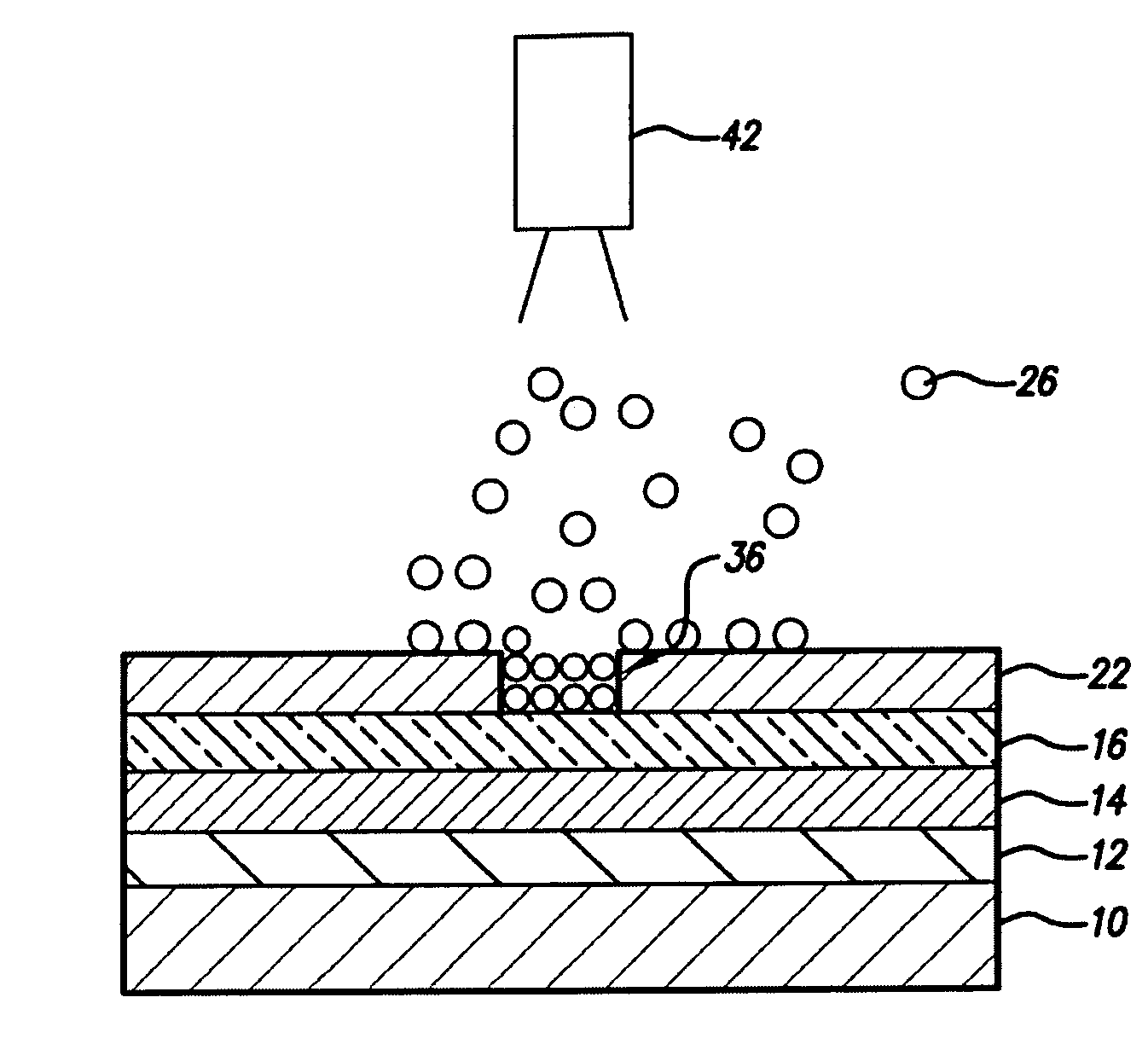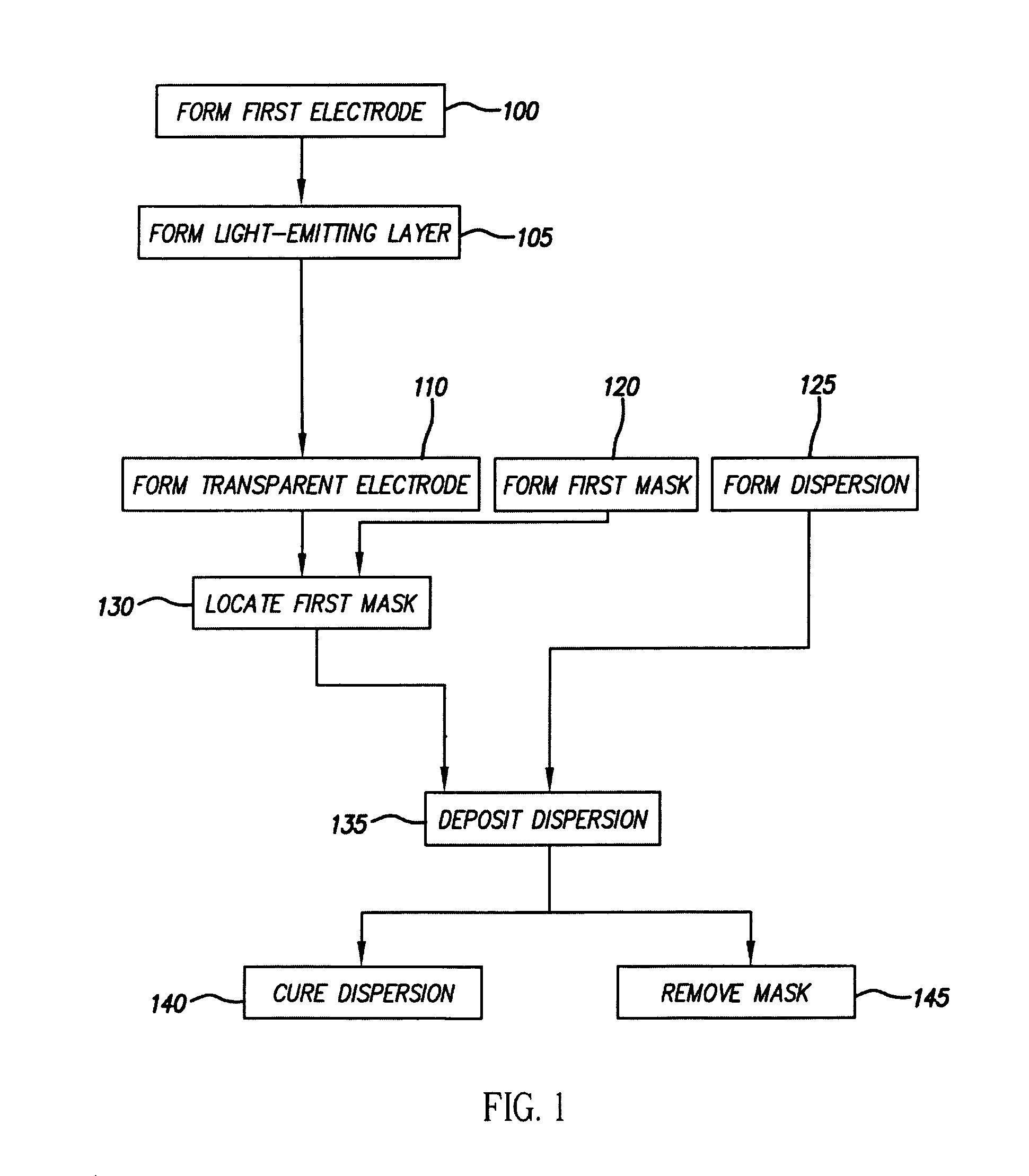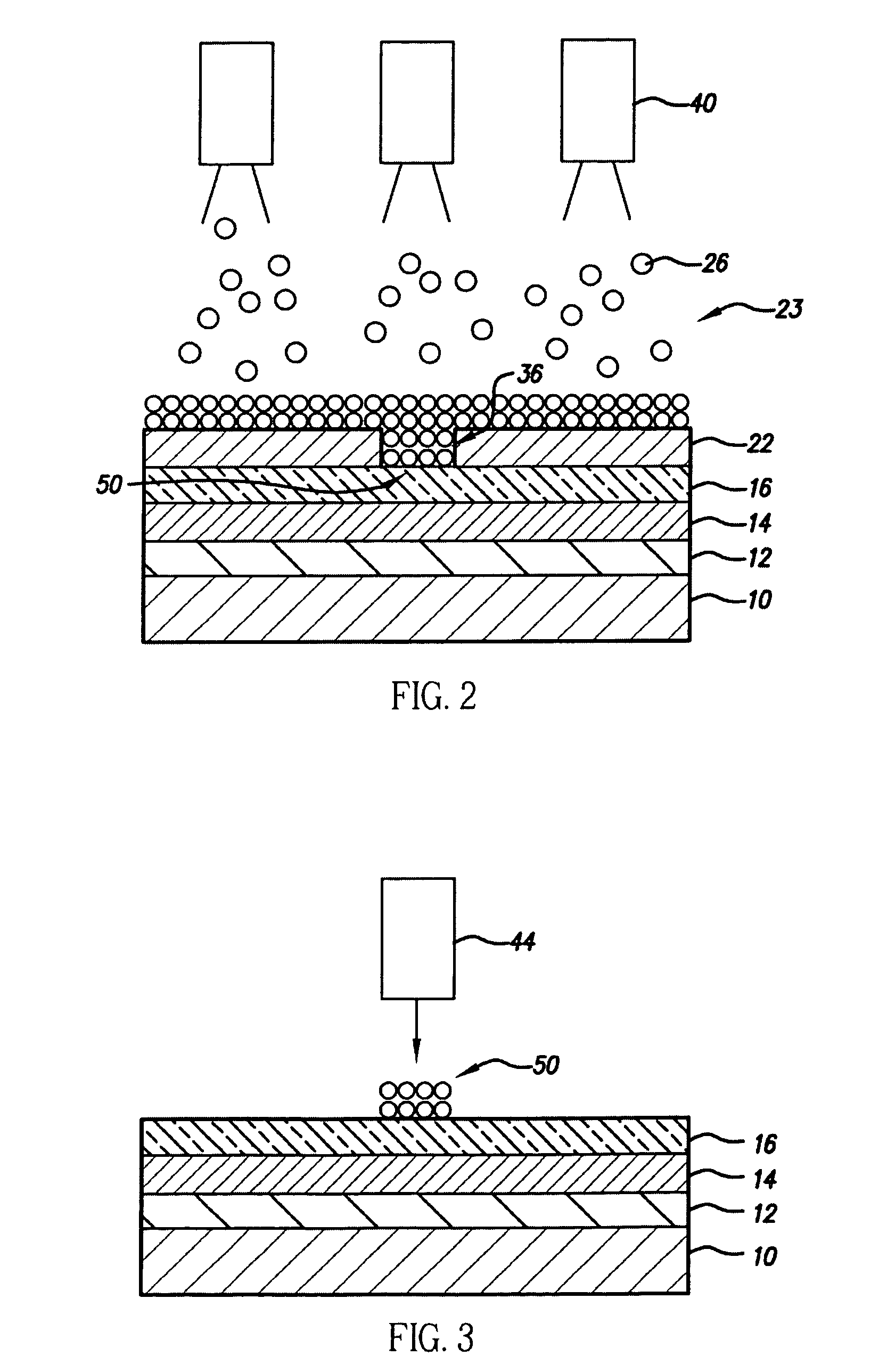Method for improving current distribution of a transparent electrode
a technology of transparent electrodes and current distribution, which is applied in the direction of organic semiconductor devices, semiconductor devices, material nanotechnology, etc., can solve the problems of limited current-carrying capacity of such electrodes, limited power supply to led materials, and limited light emitted, so as to improve the power distribution of top-emitters
- Summary
- Abstract
- Description
- Claims
- Application Information
AI Technical Summary
Benefits of technology
Problems solved by technology
Method used
Image
Examples
Embodiment Construction
[0030]Referring to FIG. 1, a method for improving power distribution of a transparent electrode in a light-emitting diode (LED) device, comprises the steps of forming 100 a first electrode over a substrate, forming 105 one or more light-emissive layers, and forming 110 a transparent electrode on a substrate to make a light-emitting diode (LED). A first mask having first openings may be formed 120 before, after, or at the same time as the LED. Likewise, a dispersion containing conductive precursor components may be formed 125 before, after, or at the same time as the LED. The first mask is located 130 over the transparent electrode. The dispersion is deposited 135 over the first mask and through the first openings onto the transparent electrode. The first mask may be removed 145 and the dispersion cured 140 to form first patterned conductive areas having a first thickness on the transparent electrode.
[0031]Referring to FIG. 2, an LED device made according to an embodiment of the pres...
PUM
 Login to View More
Login to View More Abstract
Description
Claims
Application Information
 Login to View More
Login to View More - R&D
- Intellectual Property
- Life Sciences
- Materials
- Tech Scout
- Unparalleled Data Quality
- Higher Quality Content
- 60% Fewer Hallucinations
Browse by: Latest US Patents, China's latest patents, Technical Efficacy Thesaurus, Application Domain, Technology Topic, Popular Technical Reports.
© 2025 PatSnap. All rights reserved.Legal|Privacy policy|Modern Slavery Act Transparency Statement|Sitemap|About US| Contact US: help@patsnap.com



